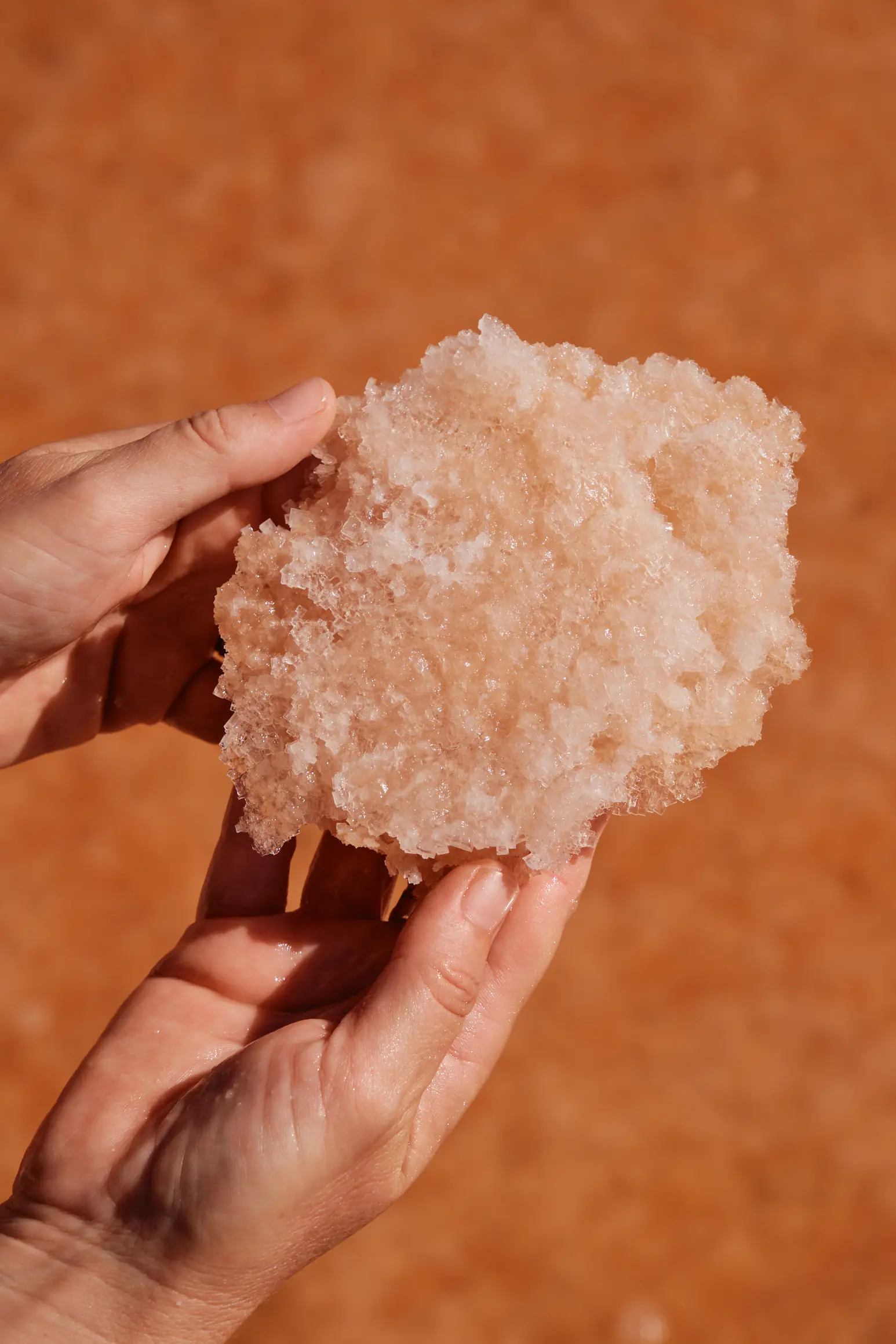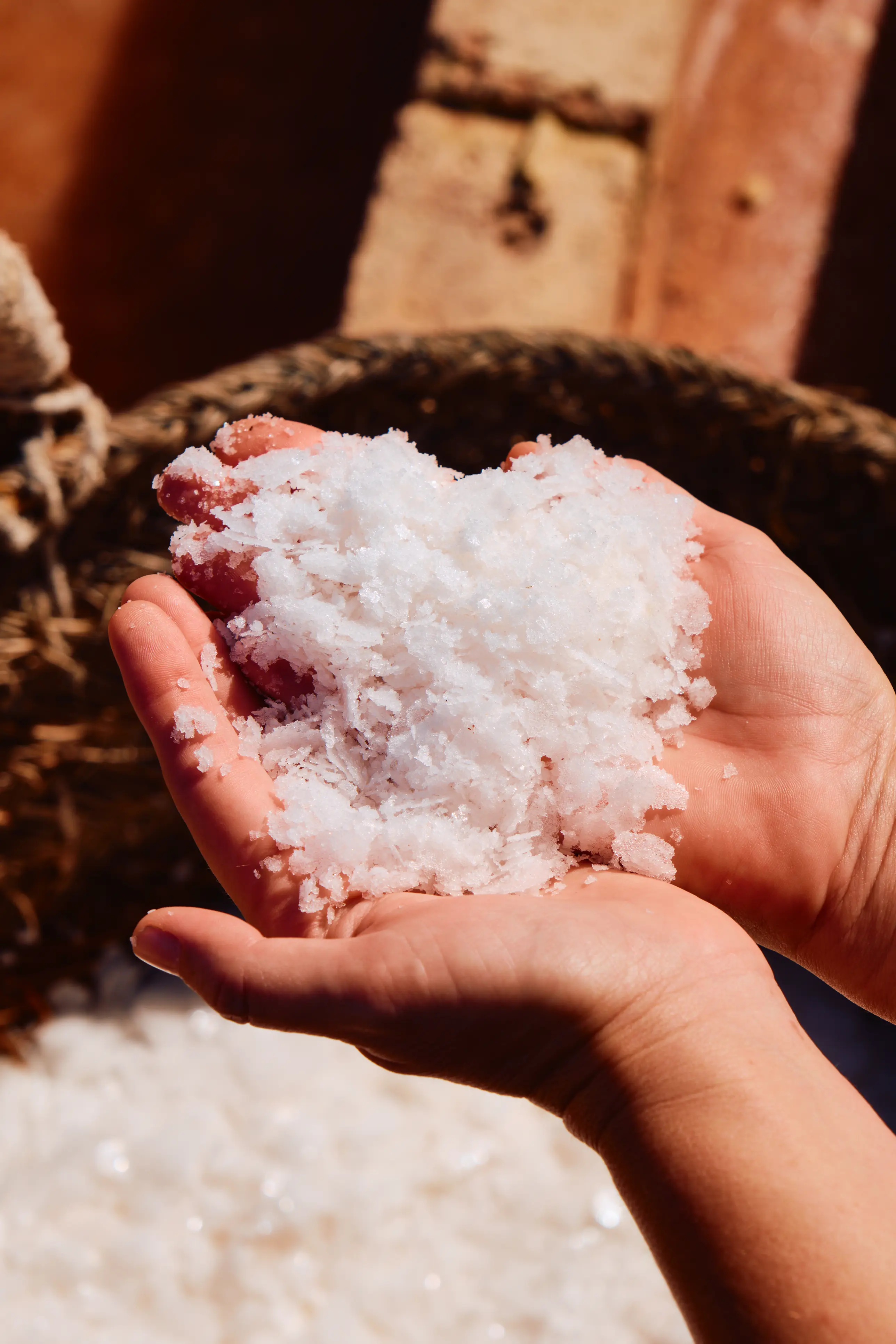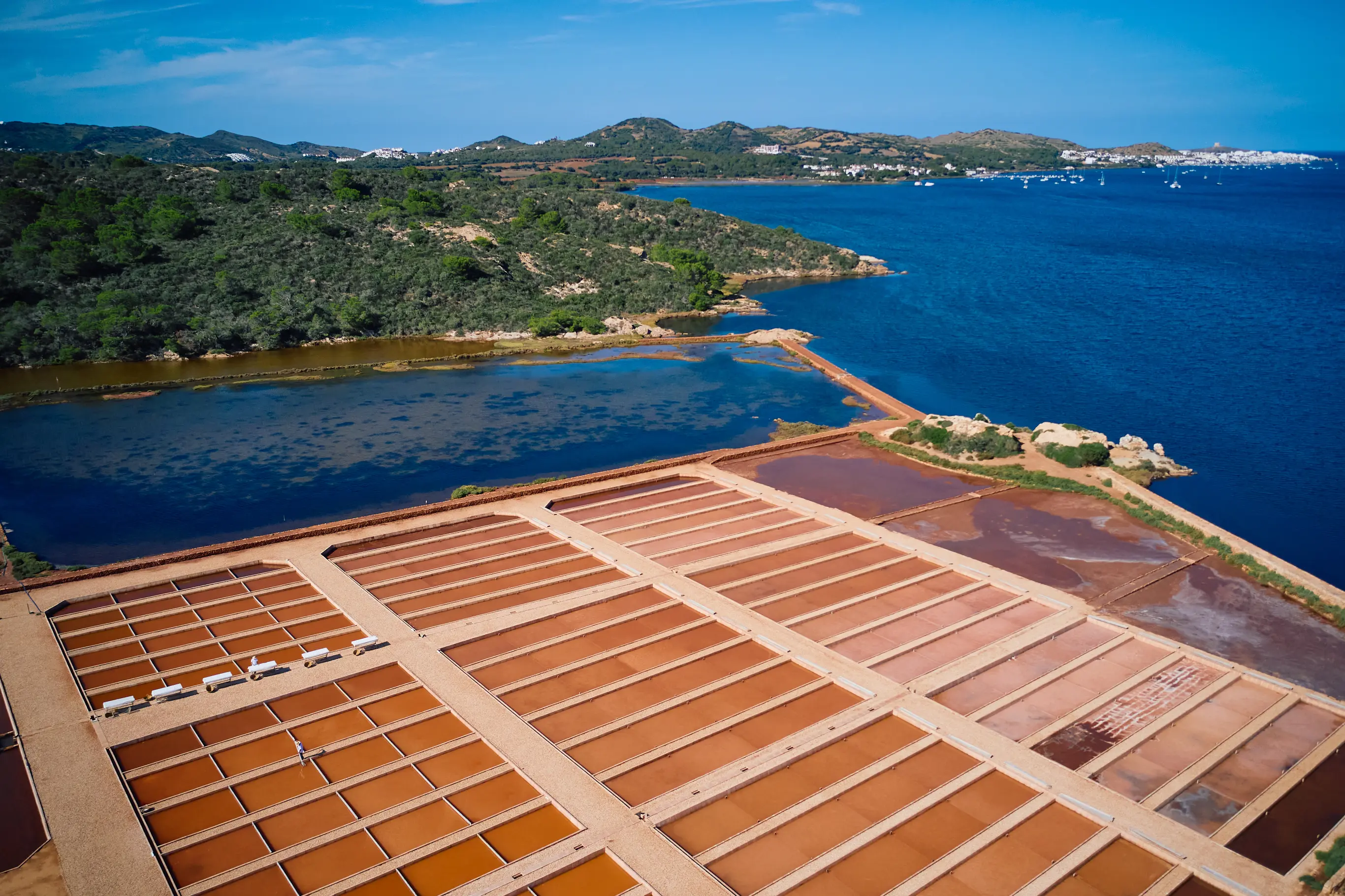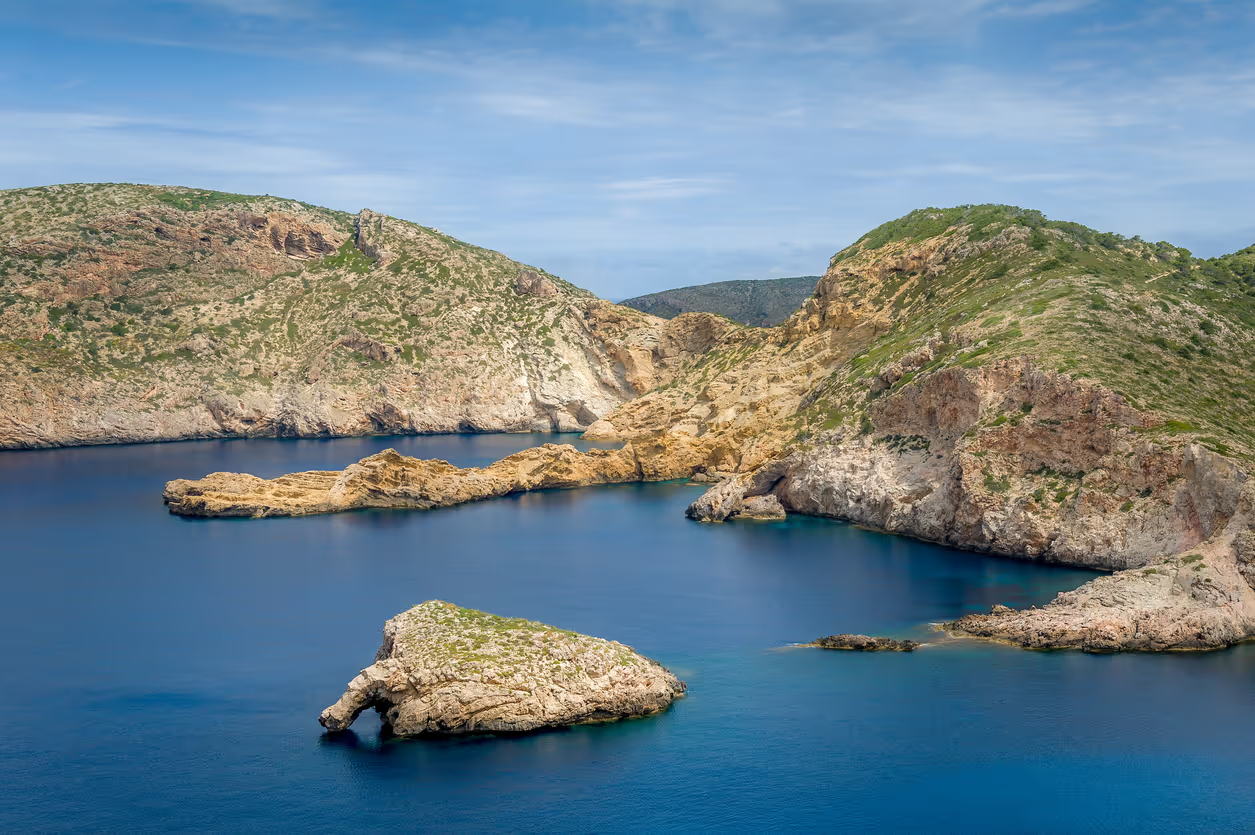
I
n the north of Menorca, where fierce winds batter the dark rocks and waves crash against the coast, Fornells Bay offers shelter, an oasis of calm that almost resembles a lake. Nestled at the end of a protective inlet, the Concepción salt fields blend beautifully into this wild and unspoilt landscape. Fifty-four basins surrounded by walls of mud and clay contain water that takes on shades of purple, pink, red and orange. These colourful rectangles contrast with the blue of the Mediterranean, the green of the olive groves and the sparkling white salt. All that's missing are the flamingos, fifteen of which live nearby, to complete the picture, not to mention the myriad migratory birds that like to nest in these areas where water seeps into the marshes and lagoons. “The basins have a contemporary feel to them,” comments Rémy Best, who, with his wife Verena, took over the salines in 2020. Two years of work were carried out with respect for the environment and local building traditions: everything was built using stone and clay, not a single gram of concrete or cement was used in the 4,000 km of low walls or in the jetty, which was rebuilt as it was in the days when boats docked to load salt and transport it to Ciutadella or Mahon.
The first salt fields in Menorca appeared in the 18th century. Until then, Menorcans enjoyed the privilege of being able to collect salt deposits formed by the evaporation of seawater from the crevices in the rocks, free of charge. In 1713, Spain signed the Treaty of Utrecht and Menorca came under British rule. England, which wanted to make the island a strategic point for controlling the Mediterranean and developing trade, encouraged the creation of salt beds. There were six salinas in Menorca, four in the north and two in the south, but they were not equally successful. The clay in the north maintained the water temperature, while in the south, where the soil is limestone, the water cooled quickly. After the Second World War, industrialised salt flooded the island and the last salt bed, La Concepción, closed its doors in 1984. The tedious, low-paid and gruelling work of a salt worker, carried out under the relentless heat of the sun, did not inspire many to take up the trade.















